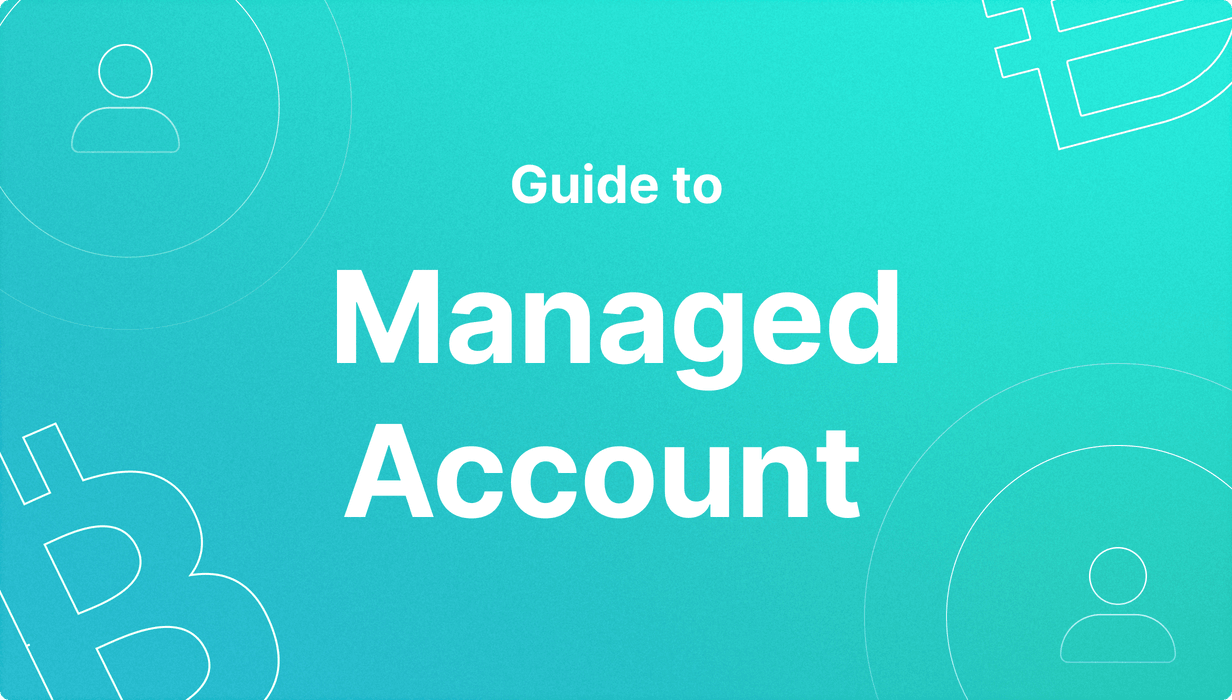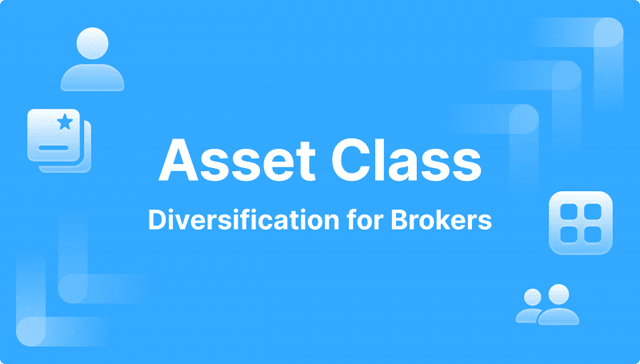Managed Account: Types, Features, and How to Choose the Right One

Investing can be overwhelming, especially when managing a diverse portfolio across multiple asset classes. This is where managed accounts come in — a personalised investment solution where a professional manages your portfolio based on your specific financial aspirations, risk preferences, and market conditions.
Whether you opt for a managed brokerage account, a separately managed account (SMA), a unified managed account (UMA), or a managed discretionary account, these investment vehicles provide strategic oversight, tax efficiency, and customised asset allocation.
This guide will explore the different types of managed accounts, their features, and how to choose the right one for your financial future.
Key Takeaways
Managed accounts provide tailored investment strategies, direct asset ownership, and professional profile management for long-term financial success.
Options like SMAs and UMAs cater to different investor needs, from individual customisation to multi-asset class diversification.
Choosing the right managed brokerage account depends on your risk tolerance, tax considerations, and level of control over investment decisions.
What Is a Managed Account?
A managed account is a type of investment account professionally managed by a financial advisor, portfolio manager, or investment firm on behalf of an individual investor. The primary purpose of a managed account is to tailor an investment strategy based on the investor’s specific financial objectives, risk tolerance, time horizon, and overall wealth management needs.

Unlike mutual funds or ETFs, which pool money from multiple investors into a single portfolio, a managed account is structured specifically for a single investor, allowing for personalised investment decisions and direct ownership of underlying assets.

Over 80% of HNWIs use a managed discretionary or individually managed account to assure personalised financial planning and investment oversight.
Key Features of a Managed Account
A managed account is a professionally supervised investment portfolio tailored to an individual’s financial objectives. Unlike pooled investment vehicles such as mutual funds, a managed account allows for customisation, direct ownership of assets, and active management by a dedicated portfolio manager or advisory firm.
Have a Question About Your Brokerage Setup?
Our team is here to guide you — whether you're starting out or expanding.
Managed accounts possess distinct characteristics that set them apart from alternative investment choices.
Personalised Investment Strategy
A major benefit of managed accounts is their tailored investment approach. Portfolio managers design a diversified asset allocation based on the investor’s financial objectives, risk tolerance, liquidity needs, and time horizon.
The strategy is adaptable, allowing for adjustments in response to market conditions and changes in investor's financial situation. Managed accounts can focus on growth, income generation, or capital preservation while integrating risk management to balance returns and volatility.
Direct Ownership of Assets
Unlike mutual funds or ETFs, a managed account allows investors to own individual securities such as stocks, bonds, and ETFs directly. This provides greater transparency, as investors can see exactly what they hold.
Direct ownership also offers more control over asset allocation and rebalancing. Another key advantage is tax efficiency, as investors can strategically manage capital gains and employ tax-loss harvesting to minimise their tax burden.
Professional Investment Management
Experienced financial professionals actively oversee managed accounts, applying research-driven investment strategies and financial analysis. Fund managers continuously monitor market trends, adjust portfolios accordingly, and make disciplined investment decisions based on structured methodologies. This eliminates emotional decision-making and ensures a proactive approach to portfolio optimisation.
Customisation and Flexibility
Managed accounts provide high levels of customisation to match the investor’s preferences and financial needs. Asset allocation can be adjusted based on personal goals, including ethical or ESG investing, where investors can exclude certain industries or sectors.
Additionally, investors can focus on specific themes, such as technology, healthcare, or sustainability, to align their portfolios with their values or market interests.
Discretionary and Non-Discretionary Management
Managed accounts can be discretionary, where the portfolio manager has full authority to make investment decisions without the investor’s prior approval, allowing for the timely execution of trades. Alternatively, in non-discretionary accounts, investors retain decision-making authority and must approve each transaction, offering more control but requiring active engagement in portfolio management.
Fee-Based Compensation Model
Managed accounts typically operate on a transparent fee-based structure, where investors pay a percentage of their assets under management (AUM).
This aligns the advisor’s incentives with the investor’s financial success, as the manager earns more when the portfolio grows. Unlike commission-based brokerage accounts, this model minimises conflicts of interest and ensures cost predictability.
Tax Optimisation Strategies
Tax efficiency is a key feature of managed accounts, particularly for high-net-worth investors. Portfolio managers use tax-loss harvesting to offset capital gains and strategically allocate assets across taxable and tax-advantaged holdings.
Unlike mutual funds, which distribute capital gains to all shareholders, managed accounts allow for greater control over the timing of taxable events, reducing the investor’s overall tax liability.
Portfolio Rebalancing and Risk Management
Portfolio managers conduct periodic rebalancing, buying or selling securities as needed to maintain an optimal asset allocation. They also implement risk management techniques such as hedging, sector rotation, and diversification to minimise downside risk.
Avoiding overconcentration in any single stock or industry helps ensure long-term portfolio stability and risk-adjusted returns.
Integration with Holistic Financial Planning
Managed accounts are often part of a broader financial strategy, incorporating retirement planning, estate planning, and liquidity management. Advisors ensure the portfolio aligns with long-term retirement income needs, facilitates generational wealth transfer, and maintains liquidity for major life events or unexpected expenses.
Suitable for High-Net-Worth and Institutional Investors
Managed accounts are particularly beneficial for high-net-worth individuals (HNWIs) and institutional investors who require sophisticated investment solutions. They offer advanced wealth management strategies, such as private equity investments and hedge funds, and greater tax and estate planning control. For investors with complex financial needs, managed accounts provide a highly customised and professional approach to wealth management.
Classes of Managed Accounts — A Detailed Overview
Managed accounts offer diverse investment structures tailored to investor needs, risk appetites, and financial goals. These accounts differ regarding investment strategies, asset allocation methodologies, discretionary control, and fee structures.
Below is a detailed breakdown of the various types of managed accounts, highlighting their unique characteristics and suitability for different investor profiles.
Separately Managed Accounts (SMAs)
A Separately Managed Account (SMA) is a professionally managed investment portfolio where an individual investor directly owns the underlying securities. Unlike mutual funds, which pool investors' assets, SMAs offer a high degree of customisation, tax efficiency, and transparency.
Portfolio managers tailor investment strategies based on specific financial objectives, risk tolerance, and liquidity needs. Investors benefit from greater visibility into their holdings and have control over capital gains taxation through strategies like tax-loss harvesting.
SMAs are ideal for high-net-worth individuals (HNWIs) seeking personalised portfolio management and direct ownership of assets.
Unified Managed Accounts (UMAs)
A Unified Managed Account (UMA) consolidates multiple investment strategies and asset classes into a professionally managed portfolio. It integrates equities, fixed income, mutual funds, ETFs, hedge funds, and other alternative investments, providing investors with a centralised and diversified portfolio management solution.
The primary advantages of UMAs include streamlined administration, tax optimisation, and comprehensive financial planning. This type of managed account is best suited for investors with complex portfolios, institutions, and HNWIs who require a holistic, multi-asset-class approach.
Discretionary vs. Non-Discretionary Managed Accounts
In a discretionary managed account, the portfolio manager has full authority to make investment decisions without requiring the investor's prior approval, allowing for timely execution of trades, proactive risk management, and systematic portfolio adjustments. This approach is ideal for investors who prefer professional oversight with minimal involvement.
In contrast, a non-discretionary managed account requires the investor's approval for each trade or reallocation, providing greater control over investment decisions but requiring more active engagement. This structure is better suited for investors who wish to retain decision-making authority while benefiting from expert advisory services.
Robo-Advisory Managed Accounts
A robo-advisory managed account is an algorithm-driven investment solution that automates portfolio construction and rebalancing. Using modern portfolio theory (MPT) and AI-driven asset allocation, these accounts offer a cost-efficient, passive investment strategy primarily focused on ETFs and index funds.
With low fees, automated rebalancing, and a hands-off approach, robo-advisory managed accounts are best for cost-conscious investors, beginners, and those comfortable with algorithmic decision-making.
Hedge Fund Managed Accounts
A hedge fund-managed account provides direct exposure to alternative investment strategies while maintaining greater transparency, liquidity, and control than traditional hedge funds. These accounts utilise long/short equity, global macro, arbitrage, and managed futures to achieve absolute returns with lower correlation to public markets.
Hedge fund-managed accounts often employ leverage and derivatives to enhance performance, making them suitable for accredited investors, institutions, and those willing to take on higher risk in pursuit of alpha generation.
Retirement Managed Accounts
Designed specifically for long-term wealth accumulation and retirement planning, retirement-managed accounts offer a structured approach to portfolio growth, income distribution, and tax-efficient withdrawals.
These accounts are commonly used within 401(k) plans and customised retirement portfolios, where professional managers tailor investments to match an individual's timeline and risk tolerance.
Unlike static target-date funds, retirement-managed accounts optimise dynamic asset allocation and withdrawal strategy, making them ideal for retirees and employees seeking active management of their retirement savings.
Multi-Manager Accounts
A multi-manager account employs multiple investment managers within a single portfolio, allowing investors to diversify across different management styles, asset classes, and market strategies. This approach reduces reliance on a single manager's performance, mitigates risk, and provides exposure to various investment philosophies.
Multi-manager accounts are most beneficial for institutional investors, family offices, and HNWIs who require a sophisticated, multi-strategy approach to portfolio management.
How to Choose the Right Managed Account?
Choosing the right managed account requires careful evaluation of your financial priorities, risk aversion, investment values, and level of involvement.
With various types of managed accounts available — each offering different levels of customisation, tax efficiency, and professional oversight — it is essential to consider several key factors before making a decision.
Define Your Investment Objectives
Before selecting a managed account, determine whether your goal is capital appreciation, income generation, risk management, or tax efficiency. Growth-focused investors may benefit from equity-heavy strategies, while those seeking stability should consider diversified allocations with fixed-income investments.
Tax-conscious investors can opt for separately managed accounts (SMAs) or unified managed accounts (UMAs) that allow for tax-loss harvesting and strategic asset placement.
Assess Your Risk Tolerance
Understanding your ability to withstand market fluctuations is essential in choosing a managed account. Investors with high-risk tolerance may prefer hedge fund-managed accounts or growth-oriented SMAs, while those with low-risk tolerance may opt for conservative multi-manager accounts or retirement-focused UMAs.
Additionally, consider your investment time horizon and liquidity needs, as some accounts contain illiquid assets such as private equity.
Determine the Level of Professional Management Required
Managed accounts vary in how much control the investor retains. Discretionary managed accounts grant full authority to the portfolio manager for trade execution and risk management, making them ideal for hands-off investors.
On the other hand, non-discretionary accounts require investors to approve each trade, providing greater control but demanding more involvement in the decision-making process.
Evaluate the Cost and Fee Structure
Managed accounts typically charge fees based on assets under management (AUM). Management fees generally range between 0.50% to 2% annually, while some accounts, such as hedge fund-managed accounts, may also include performance-based fees (e.g., 20% of profits exceeding a benchmark).
Trading costs and custodial fees may also apply. Cost-sensitive investors may benefit from robo-advisory managed accounts, which offer lower fees (0.25%–0.50%), while high-net-worth individuals may find customised SMAs or UMAs more valuable despite higher costs.
Consider Tax Implications
Tax efficiency can greatly wedge investment returns. Accounts like SMAs and UMAs allow for capital gains management and tax-loss harvesting, while retirement-focused managed accounts (401(k), IRAs) optimise long-term tax deferral and structured withdrawal strategies. High-tax-bracket investors should prioritise accounts that minimise taxable events and maximise after-tax returns.
Analyse Investment Strategies and Asset Allocation
Different managed accounts employ distinct investment strategies that affect performance. Some, like hedge fund-managed accounts, use active management, derivatives, and alternative investments to generate absolute returns, while others, like robo-advisory accounts, use passive, index-based approaches.
Multi-asset class exposure is another important factor — UMAs and multi-manager accounts provide diversified access to equities, bonds, real estate, and other asset classes. Growth-oriented investors may prefer active strategies, whereas cost-conscious investors may lean toward passive or hybrid investment models.
Assess Transparency, Reporting, and Accessibility
Investors should ensure that their managed account provides clear reporting, real-time access, and transparent fee structures. Regular quarterly or monthly reports on performance, holdings, and asset allocation allow for better oversight.
Some providers, particularly hedge fund accounts, may offer limited transparency due to complex structures, while SMAs and UMAs provide full visibility into individual holdings.
Work with a Reputable Managed Account Provider
Choosing a trustworthy financial institution or portfolio manager is crucial. Look for consistent long-term performance, regulatory compliance (SEC, FINRA), and experienced financial professionals (CFAs, CFPs). Additionally, ensure the provider offers strong client support, responsive communication, and clear investment schemes tailored to personal endeavors.
Conclusion
A managed account isn’t just an investment tool — it’s a strategic wealth management solution that helps you stay ahead in an evolving financial landscape. Whether you choose a managed brokerage account, a separately managed account (SMA), or a unified managed account (UMA), working with professional advisors can enhance your portfolio’s performance, tax efficiency, and long-term growth.
As you navigate the investment world, choosing the right managed discretionary account tailored to your needs can make all the difference in achieving financial security. Now’s the time to take control of your wealth with a managed investment strategy that aligns with your future goals.
Interested in Partnering or Collaborating?
Over the past 10+ years, we’ve partnered with industry leaders to build solutions that set the standard in fintech. Now, we invite you to join us.
FAQ
- What is a managed account?
A professionally managed investment account offering customised asset allocation, active management, and direct ownership of securities.
- What are the benefits of a managed brokerage account?
It provides expert oversight, tax-efficient investing, personalised strategies, and flexibility in asset selection.
- How does a managed discretionary account differ from a non-discretionary account?
A discretionary account lets the manager trade without approval, while a non-discretionary account requires investor consent for each trade.
- What’s the difference between an SMA and a UMA?
An SMA is customised for one investor, while a UMA integrates multiple strategies for broader diversification.
- Who should consider an individually managed account?
Ideal for high-net-worth investors, retirees, and those seeking personalised portfolio management and tax optimisation.
Recommended articles
Our team will present the solution, demonstrate demo-cases, and provide a commercial offer







